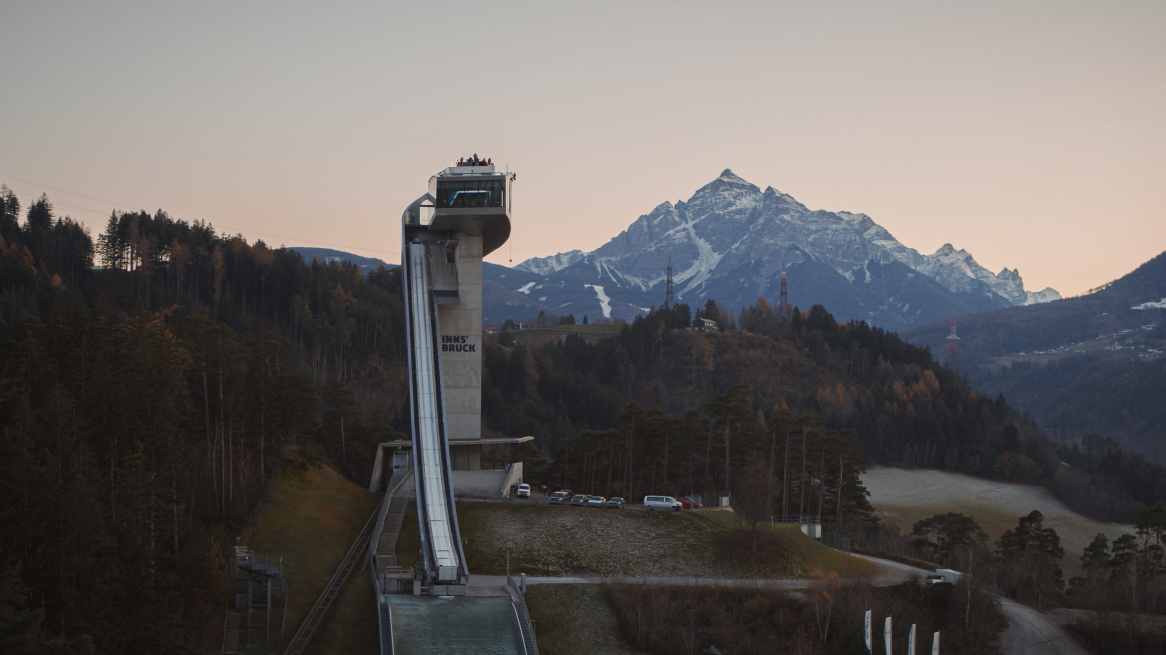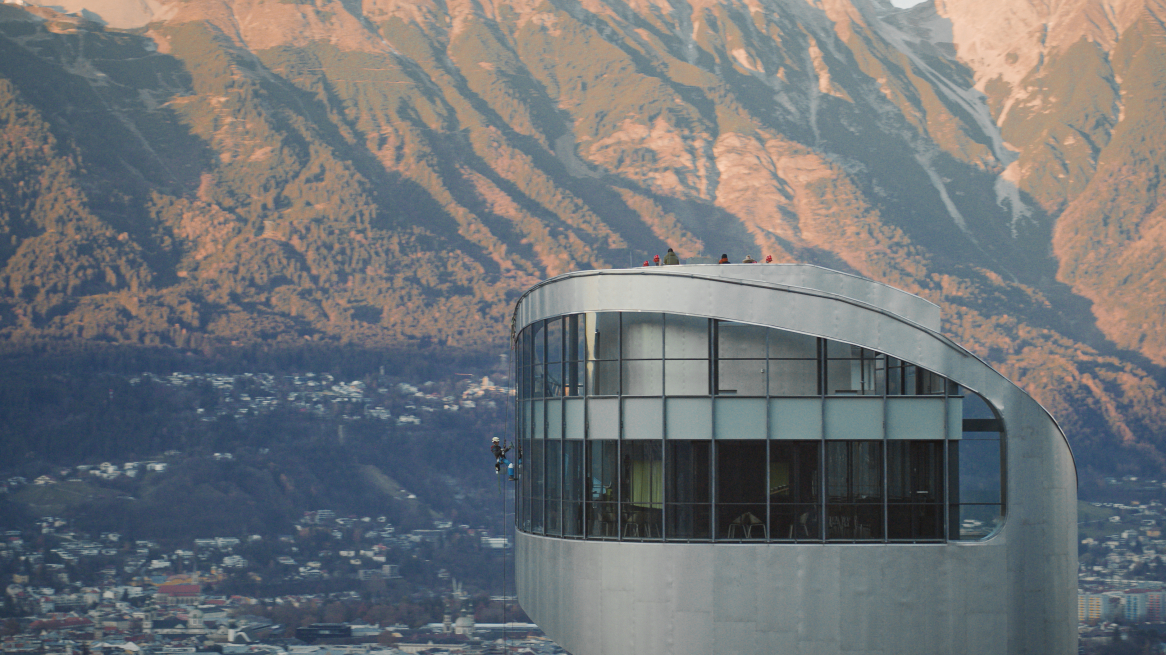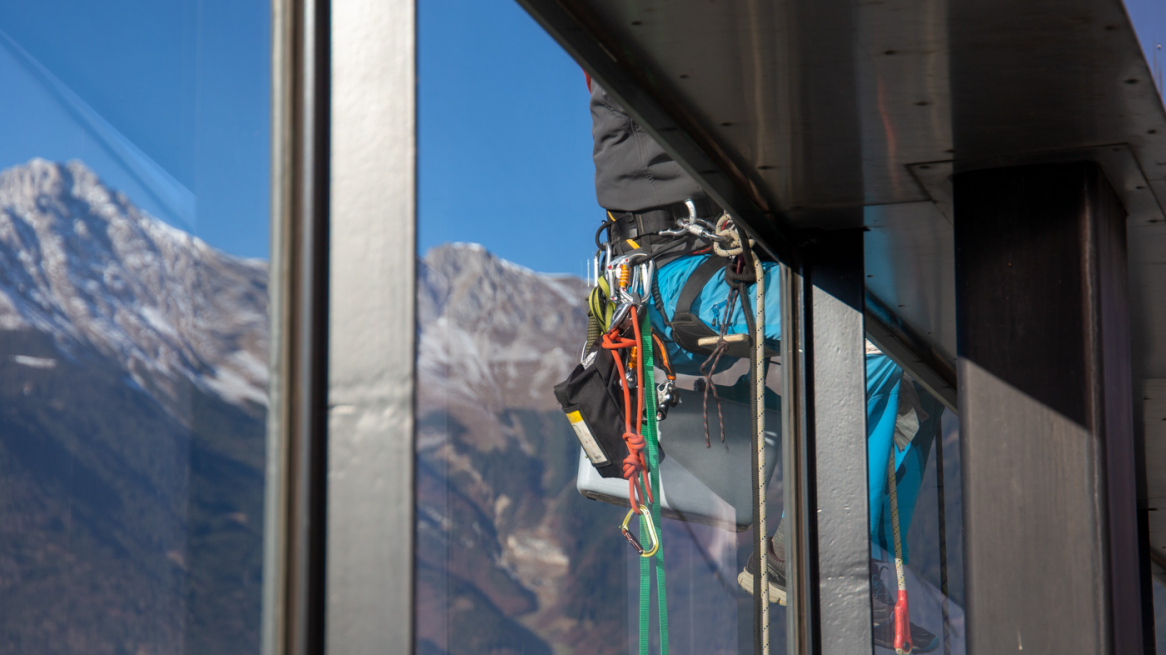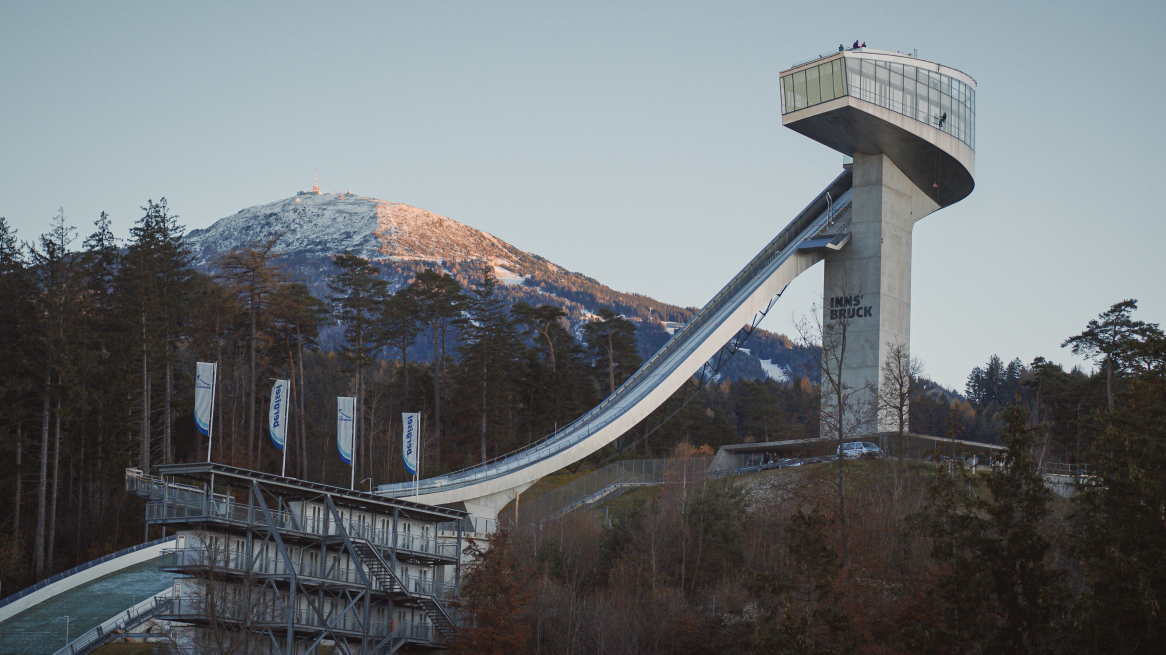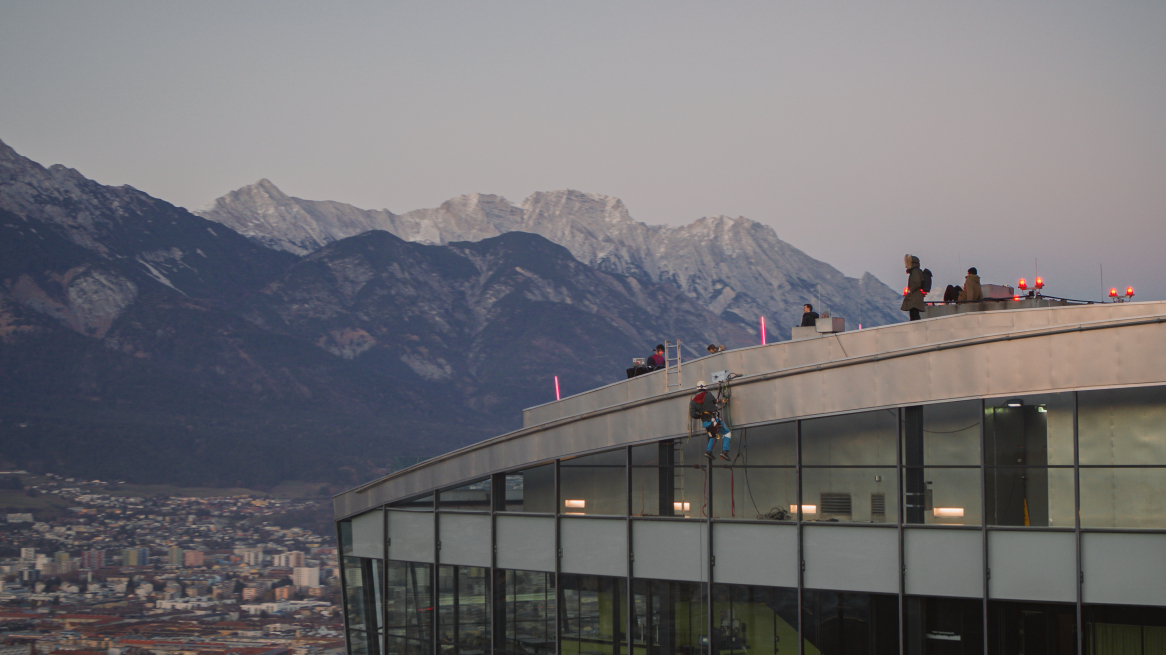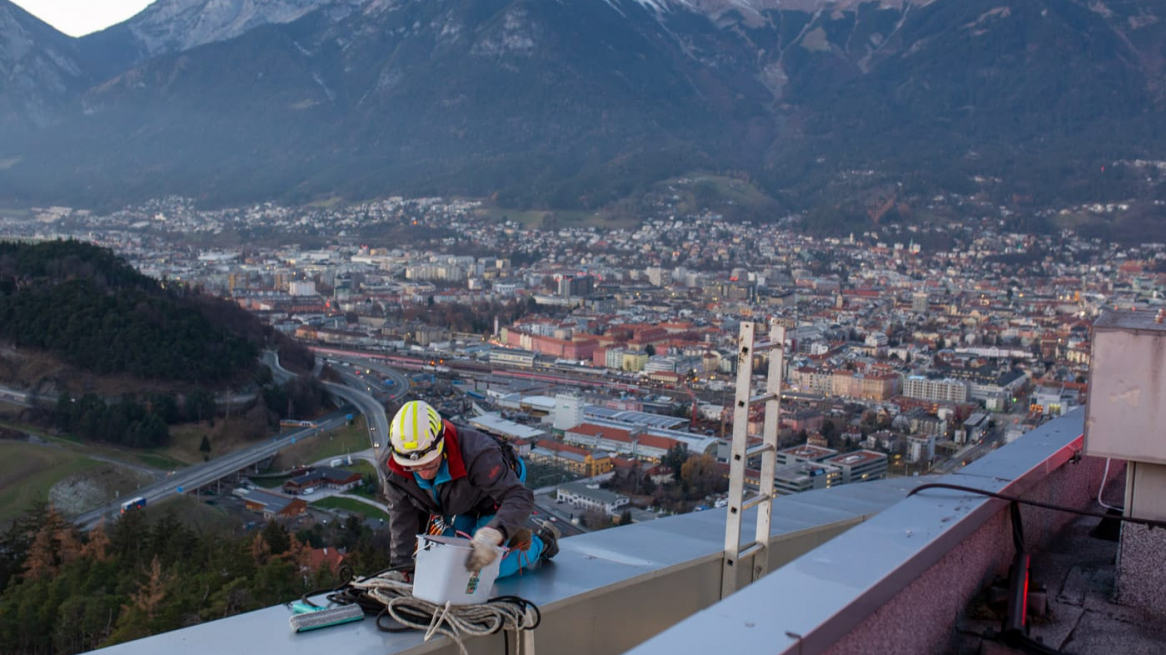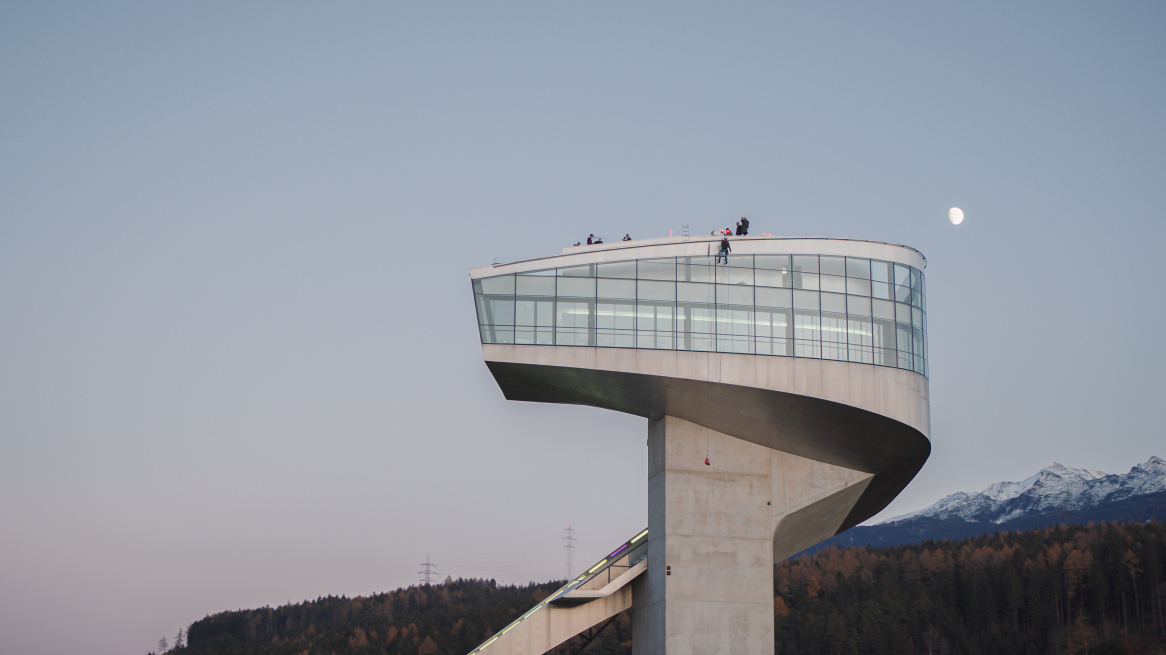
PERHAPS THE MOST BEAUTIFUL WORKPLACE IN THE CITY
I was recently allowed to interview the native of Lower Austria. Andreas is actually a carpenter, but works mainly as a certified ski instructor, mountain and ski guide. As an industrial climber he usually works a few weeks in autumn. This autumn he set his sights on the ski jump for the third time... He tells us more about it himself in the interview!
The ski jump with a view of the Serles in the background. On the right side of the ski jump you can see the ropes. ©Innsbruck Tourism
INTERVIEW WITH INDUSTRIAL CLIMBER ANDREAS HÖLLERER
ANDREAS, WHAT KIND OF TRAINING DO YOU NEED TO BE ABLE TO TAKE ON THIS UNUSUAL JOB AT THE SKI JUMP?
AS A MOUNTAIN GUIDE YOU ARE PROBABLY USED TO GOOD VIEWS AT WORK, WHICH VIEW DO YOU PERSONALLY FIND THE MOST BEAUTIFUL FROM THE SKI JUMP?
The whole 360° panorama is very special for me. The combination of the view down into the city and into the different mountains around Innsbruck is unique.
WHEN IS THE RIGHT TIME FOR THE ACTION? WHAT WEATHER FORECAST IS IDEAL AND WHEN IS IT DEFINITELY NOT POSSIBLE? HOW MANY HOURS A DAY ON AVERAGE DO YOU HANG ON THE ROPES DURING THE "CLEANING WEEK"?
Cool, windless and precipitation-free autumn weather is optimal. No chance in rain or snow. Dangerous with wind. Especially when the wind blows from the south! Six to seven hours I hang in the rope and clean - the rest of the 10- to 11-hour day is preparation like moving ropes, preparing the work equipment and my gear, cleaning the work equipment and follow-up, cordoning off the ground (if necessary).
WHAT DOES YOUR EQUIPMENT CONSIST OF FOR SUCH AN OPERATION?
- PPE (personal protective equipment): work harness, helmet, 5-7 screwgate carabiners, 2-3 snap carabiners, 2 reef cords (3 m), 2 webbing slings (120 cm), a pulley with backstop, a pulley carabiner, ascender, "Grillon" positioning aid, "Ajust" self-securing sling, "ID" descender, "ASAP" fall arrest device, seat board, smartphone and a small 1st aid kit.
- To set up the rope routes: semi-static industrial climbing ropes. These must reach to the ground in order to be able to leave the workplace quickly in an emergency by abseiling the rope down to the ground. In addition, various edge protection devices and webbing slings are necessary.
Looking down - in an emergency Andreas would have to abseil a full 50 metres to the ground. ©Andreas Höller
DO YOU ALWAYS CLEAN WITH THE SAME AGENT OR ARE THERE TEMPERATURE-RELATED DIFFERENCES?
The cleaning equipment consists of a bucket with cleaning solution, several clean cotton cleaning cloths, glass washer including rubber peel-off lip, plastic friction sponge, small scraper with metal blade and glass cleaning concentrate in a small bottle.
- At positive temperatures: conventional glass cleaner with a dash of all-purpose cleaner and a little rinse aid from the dishwasher, diluted with clear water.
- At negative temperatures: commercially available windscreen antifreeze as used in the windscreen washer system in motor vehicles.
HOW DO YOU CLEAN SUCH A BUILDING LOGISTICALLY, IN HORIZONTAL LOOPS OR HORIZONTAL SECTIONS? WHAT IS THE MOST DIFFICULT PART?
AT THE END OF NOVEMBER THERE WAS A VIDEO SHOOT FOR A DJ-SET ON THE ROOF. HOW WAS IT FOR YOU TO END THE DAY ON THE ROOF WITH MUSIC FOR A CHANGE?
The music sounded very relaxed, the volume was just right and it was a welcome acoustic change from the otherwise quite audible noise of the Brenner motorway.
Granted, that's not how the interview took place. But theoretically it could have. ©Innsbruck Tourism
THANK YOU VERY MUCH FOR THE EXCITING INTERVIEW!
Rate this article
Show me the location on the map
Travel blogger & book author with a passion for hiking, wild herbs and alpine cuisine. #onlyinibk
Similar articles
What do you do when the highest elevation near your home town is only around 150 meters?…
"If the bee disappears from the earth, humans will only have four years to live. No more…
The first time I met Isobel Cope, I was halfway through presenting my radio show Sensations in…
Click. A privacy policy like this is accepted in no time at all. Click. And the computer…

